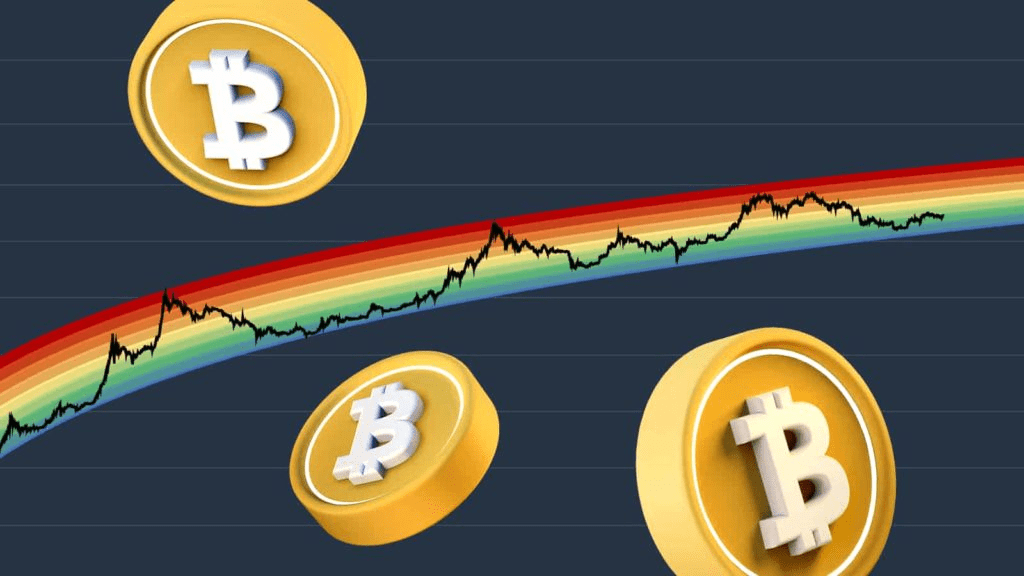Bitcoin, the first cryptocurrency, has ruled the financial world for over a decade. Although Bitcoin has seen amazing gains, its volatility makes many people seek ways to predict its price. A popular tool among crypto enthusiasts is the Bitcoin Rainbow Chart. This visual aid helps track Bitcoin’s price history and predict future trends. This post will cover the Bitcoin Rainbow Chart’s main features and February 28, 2025 BTC price.
Understanding the Bitcoin Rainbow Chart
Designed to let investors and traders know where the bitcoin might be headed, the Bitcoin Rainbow Chart is a graphic depiction of the currency’s price over time. Designed by an unidentified analyst, the chart divides Bitcoin’s price into several phases—including “accumulation,,” “optimism,” “bubble,,” and “FOMO (Fear of Missing Out)—using different color-coded bands.” Based on past trends and market mood, each band—which spans low to high—acts as a rough guide for where Bitcoin is most likely to be. It is also aligned with particular pricing ranges.
Key Aspects of the Bitcoin Rainbow Chart
The following divisions of the Bitcoin Rainbow Chart reflect several phases in the market cycle:

-
Dark Red (Bubble Territory): This band marks the very top of Bitcoin’s pricing range. Usually seen as a sign that the market is overheated and might shortly cool, Bitcoin moves into this zone. Often it is a result of too much “bubble” activity and speculation.
-
Red (Sell): When the price of Bitcoin is at its highest or almost there, the red band signals the stage. As the market gets more speculative and a downturn could be just around the corner, traders in this zone could start thinking about selling or collecting profits.
-
Orange (HODL Zone): The orange zone represents a period of steady growth, where Bitcoin is showing strong fundamentals but hasn’t reached its all-time highs yet. It’s a stage where many investors decide to “HODL” (Hold On for Dear Life), anticipating further long-term growth.
-
Yellow (Accumulate): Bitcoin is often seen as undervalued in this zone, and the price is lower than its potential. Investors in this stage view Bitcoin as a good opportunity to accumulate or buy more coins.
-
Green (Great Buying Opportunity): The green band indicates a period of high optimism and a strong buying opportunity for investors. Bitcoin’s price tends to be low compared to previous cycles, suggesting it may be in an accumulation phase or poised for a breakout.
-
Blue (Bitcoin is Super Undervalued): The blue section signals that Bitcoin is extremely undervalued. Historically, when Bitcoin enters this area, it’s viewed as a good long-term investment, as its price may soon rise in the next market cycle.
Factors Affecting Bitcoin’s Price
One should consider the outside elements that might affect Bitcoin’s price over the next years before diving into the Rainbow Chart’s projection for February 2025. Different factors contribute to defining the market value of Bitcoin:
-
Institutional Adoption: Institutional investors have lately paid close attention to Bitcoin. Businesses such as Tesla, MicroStrategy, and Square have invested billions of Bitcoins, giving the coin more credibility. The price of Bitcoin might rise noticeably as more institutional players join the market.
-
Global Economic Conditions: Particularly in uncertain times, Bitcoin is sometimes seen as a hedge against inflation and devaluation of currency. Economic crises, inflationary pressures, and currency swings can drive demand for Bitcoin as a substitute store of value.
-
Regulation and Legal Developments: The future price path of Bitcoin depends much on regulatory clarity. While regulatory crackdowns might impede market adoption, positive regulatory news can give the market confidence. The price of Bitcoin will be much shaped by continuous debates on how to control it across several nations.
-
Technological Advancements: Bitcoin’s fundamental technology is always developing. Adoption of improvements like the Lightning Network, which enables quicker and less expensive transactions, might help Bitcoin to be more accepted and raise its price.
Bitcoin Rainbow Chart’s Prediction for February 28, 2025
The Bitcoin Rainbow Chart shows that Bitcoin will follow a specific development trend through market cycles. The chart estimates Bitcoin’s future price using historical data.Bitcoin is expanding in the “yellow” and “orange” zones of the chart, but not yet peaking. Bitcoin may follow a predictable path through the chart’s colored bands if current trends continue.Bitcoin may drop to $100,000–$150,000.
By February 28, 2025, according to the Bitcoin Rainbow Chart. This projection assumes bitcoin continues its institutional acceptance, market development, and rising value store use. If Bitcoin enters the “red” zone in the coming years, it could reach $200,000.Forecasts have limitations, like all predictions. The chart is based on past data, so external events like regulatory changes, scientific discoveries, and global economic developments may significantly affect the price path.
Practical Implications for Bitcoin Investors
Particularly for long-term investors, the Bitcoin Rainbow Chart offers a useful tool. Based on past cycles, the chart lets investors estimate when Bitcoin might be undervalued or overpriced. The chart can guide short-term traders to identify overbought and oversold circumstances. Meanwhile, the “red” and “dark red” zones indicate it might be time to sell.

Or exit positions, the “green” and “blue” zones signal chances to buy. The Rainbow Chart shows long-term holders that Bitcoin will probably show regular cycles of growth and correction. Starting during the “green” or “blue” phases could pay off handsomely over time. Investors should still be alert to possible market volatility, though, and ready for both rising and declining price swings.
Recent Trends and Real-World Context
Based on current market trends, especially in view of growing institutional interest and the emergence of distributed finance (DeFi), Bitcoin has kept breaking new marks. Before seeing a notable decline, Bitcoin peaked in 2021 at over $60,000. The bitcoin has been steadily rising since then; some analysts believe it may rise even more not too far.
Forward. More general economic circumstances have also affected the price of Bitcoin. The COVID-19 epidemic sparked a growing interest in Bitcoin as a counterpoint against the devaluation of fiat money. Moreover, worries about inflation in big countries have driven investors to see Bitcoin as a possible safe-haven asset.
Conclusion
The Bitcoin Rainbow Chart can predict price when used with other Bitcoin market indicators. The chart suggests Bitcoin could reach $100,000–$150,000 on February 28, 2025, depending on market conditions. Bitcoin’s volatility and high returns should be considered. Even in volatile bitcoin markets, the Bitcoin Rainbow Chart clarifies cycles. Adoption rates, legislative changes, and technical advances will determine Bitcoin prices.The Bitcoin Rainbow Chart is a unique way to track Bitcoin’s market cycles, but its future is uncertain.


